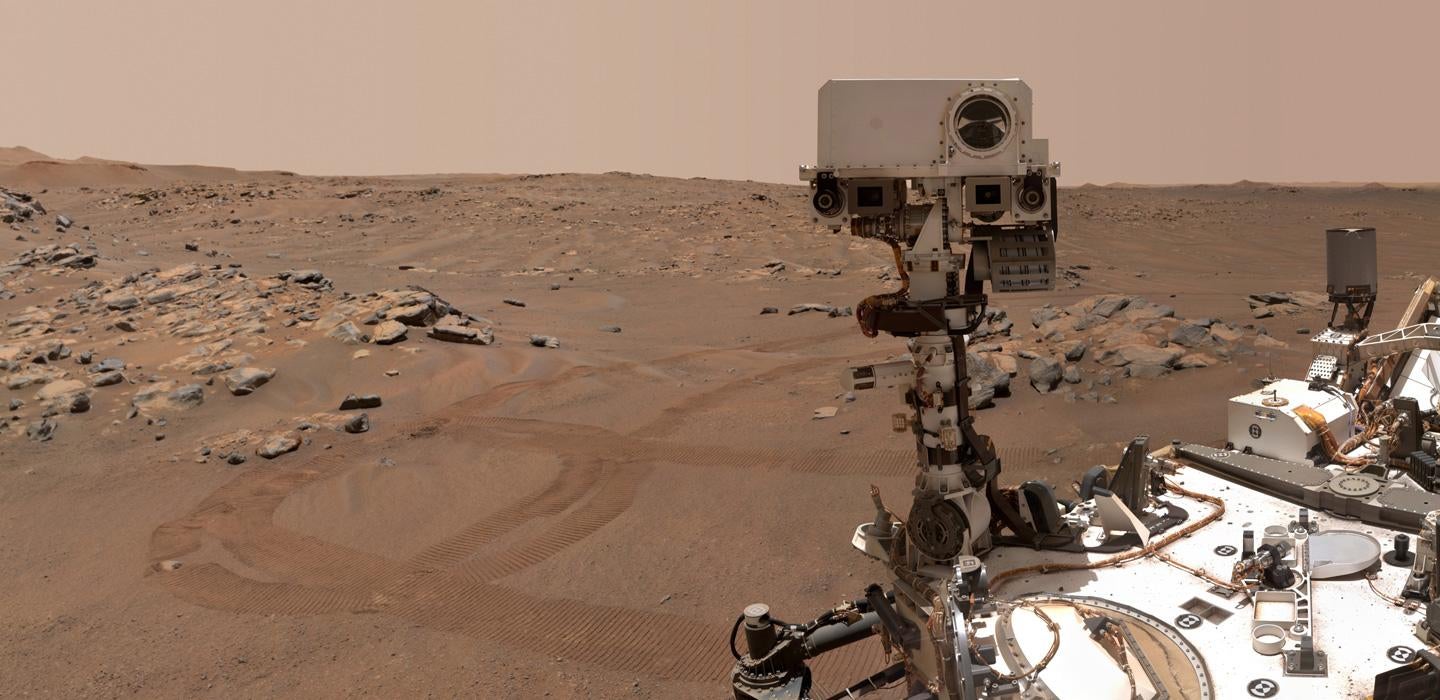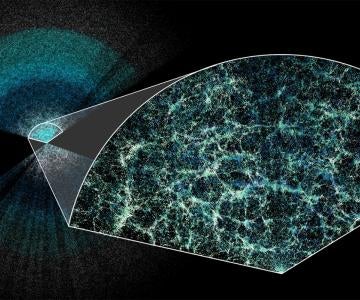
Subscribe to Pittwire Today
Get the most interesting and important stories from the University of Pittsburgh.Little green men it isn’t — but a new study co-led by a Pitt PhD candidate shows the potential for a variety of carbon-based molecules in a crater on Mars. The research isn’t proof of life on Mars, nor is it even proof of organic matter. But it does offer new lines of evidence suggesting molecules sometimes associated with life may be found on the red planet.
“We saw signals that could be associated with organic material, and so we’re pretty excited about those findings and the possibilities those could have,” said Ryan Roppel, a Pitt chemistry PhD candidate and co-lead author of the study. “I wouldn’t say that it’s at high concentrations, but it’s there wherever we’ve looked. That was quite surprising.”
The Perseverance rover began its Martian journey in February 2021, and since then has been exploring Jezero Crater, which scientists believe was once full of water and thus a prime location to search for signs of past life on the planet.
It’s aided in its search for life by SHERLOC (short for Scanning Habitable Environments with Raman and Luminescence for Organics), an instrument developed by a team including Roppel’s advisor, Sanford Asher, a distinguished professor of chemistry in the Kenneth P. Dietrich School of Arts and Sciences. SHERLOC is especially sensitive in the range of signals produced by organic molecules — those that contain the element carbon and that, on Earth, are often associated with life.
In the new study, the team found signals similar to what scientists expect from a class of ring-shaped molecules called aromatic hydrocarbons, which were especially common in areas that appear to have a wetter past. While this isn’t the first paper to show signs of organic matter in the area — Roppel and Asher were both co-authors on the first, too, published in November 2022 — in the new work, they searched over a wider area and found a wider range of signals.
The team, including researchers from more than two dozen institutions and co-led by Sunanda Sharma of NASA’s Jet Propulsion Laboratory, published the study in Nature on July 12.
A closer look
Key to the new results was the use of UV fluorescence as well as Raman spectroscopy, where researchers shine ultraviolet lasers at a material of interest and measure the color of light that bounces back: depending on its molecular structure, each chemical scatters light differently. Asher and his team have been on the leading edge of this technique since the 1980s, using it to detect the presence of everything from explosives to proteins that may signal diseases like Alzheimer’s.
Compared to the tools available on past missions to Mars, this kind of measurement allows researchers to get a more fine-grained view of where potential organic molecules are and which Martian minerals they’re associated with. While researchers have a long history of matching what they find from Raman spectroscopy with different materials on Earth, Mars has its own history. They’re starting from scratch, so each new point of data expands the kinds of associations that can be made and ideas that can be tested.
All the while, researchers at Pitt work with a version of SHERLOC housed in Asher’s lab, testing materials to see if they can recreate the kinds of signals they’re seeing on the red planet.
“We’re still working with the same elements as we have on Earth, but the context of what happened geologically is completely different,” said Asher. “As we increase our experience and our knowledge base, we’re able to come to richer and more incisive conclusions.”
Eliminate the impossible
There’s no shortage of alternate possibilities that need to be ruled out in the search for alien life. Some nonorganic molecules can look the same as organic ones to a spectrometer. Plus, there are many ways to form organic molecules — not all of which require the presence of life — and many different processes could cause the patterns of molecules found across the mosaic of minerals in Jezero Crater.
For instance, those pattens could be the result of chemistry from the crater’s waterlogged history, or it may be that certain kinds of minerals trap and preserve organic molecules better than others across billions of years of being bombarded with radiation. Then there’s the ever-present Martian dust.
“If you like complex puzzles, this is a nice one,” said Asher.
There’ll be more to find as Perseverance proceeds on its journey. Already, it’s rolled off the crater floor and up into a former river delta, and the research team continues to interpret and prepare more of the rover’s findings for publication. SHERLOC has plenty more to teach us about the Martian landscape over the next few years — and the wait for certainty about the presence of organic molecules will likely be longer.
“We actually have the ability to store these samples onboard the rover and eventually bring them back to Earth,” said Roppel. “We’re hoping to get a lot of the samples mentioned in this manuscript back to Earth as part of the Mars Sample Return mission in the early 2030s. So that’s pretty exciting.”
— Patrick Monahan, photo credit: NASA/JPL-Caltech





